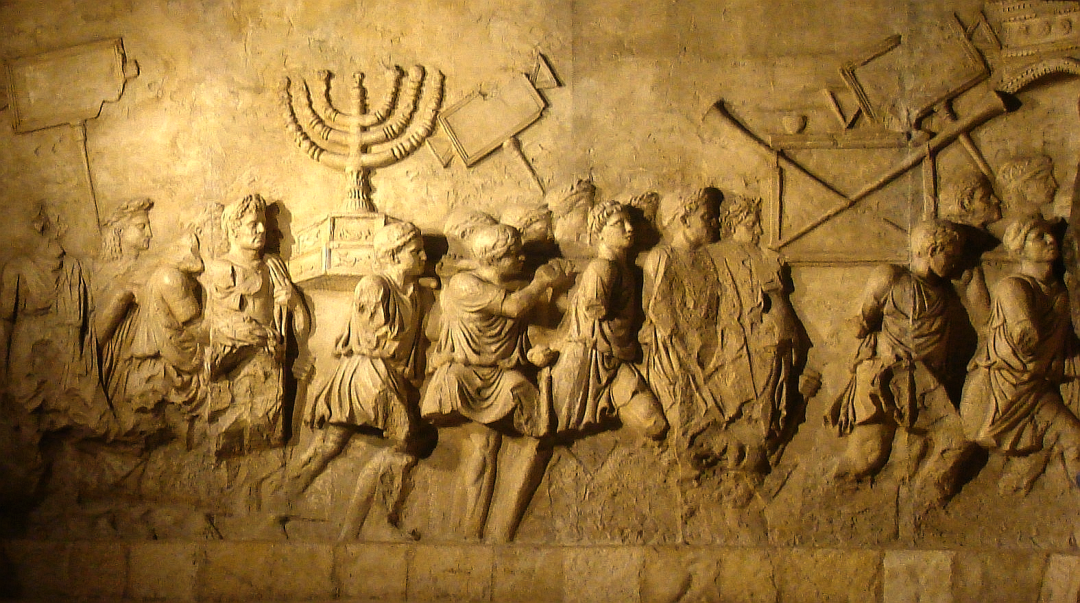In my opinion, the history of Judaism would be incomplete unless one refers to Israel as its nation of origin and its means of transference to the Jewish People.
Judaism, by having its own state, the state of Israel, has acquired tremendous strength, the strength of a vehicle. It is now on a par with Islam and Christianity who have had their own states for the last 2000 years.
Judaism, like any other religion, needs a national entity, a state as a vehicle to transfer its beliefs and customs to its adherents, and Israel is the vehicle of Judaism.
The state is such a powerful vehicle for the transference of culture that it’s used by religion. In fact, without a state, a Religion could not transfer its culture to mankind.
Israel is the vehicle by which Judaism was transferred to the Jewish People. Just as the Holy Roman Empire was the vehicle for transferring Christianity and the various Arab states was the vehicle of Islam.
History of Judaism and the history of Israel
Telling the history of Judaism without telling the history of Israel is like a travelogue that only tells about the places a traveler visits without telling how he got from one place in his journey to another.
There have been many histories of the Jews written in the last two hundred years. There is also a book on the History of Jewish Belief by Ezekiel Kaufman, which traces the development of Jewish laws and beliefs through the ages but it isn’t concerned with people.
A history of the Jews is a history of a group of people without relating to their religious beliefs. Kaufman’s History of the Jewish Belief is about religious beliefs without relating to people.
The history of Judaism must relate to both people and their religious beliefs. It must tell how its customs were transferred to the Jewish People.
If we disregard the nation where Judaism was the main religion practiced, in my opinion, we wouldn’t be telling the history of Judaism, but like Kaufman we’d be writing a book about abstract concepts.
 In my opinion, It’s obvious that a person isn’t characterized by the religion he follows but by the distinctive characteristics of the nation he belongs to.
In my opinion, It’s obvious that a person isn’t characterized by the religion he follows but by the distinctive characteristics of the nation he belongs to.
It’s not a person’s religion that distinguishes him as an individual belonging to a certain group, it’s the nation he belongs to which most influences the way a person looks, speaks, behaves, etc.
Excepting for distinctive Jewish customs like manner of prayer, food and belief Jews resemble the other people of the nation where they are living.
Although practically everyone we meet here in Israel is Jewish, outwardly they look French, Italian, German or Russian etc. not Jewish. It’s obvious that their appearance etc. originates in their country of origin and not in the religion they follow.
As time goes by, however, a melting process is taking place and we’re all beginning to look like Israelis and not like Frenchmen, Americans, Germans, etc.
This is because the Israeli national language and behavioral characteristics are taking effect on the Jewish People as they did when the Jews lived in their own state 2000 years ago and more.
The influence of these national, cultural features is so strong that one can even distinguish Israeli Jews from American Jews living in America or English Jews living in England, etc.
The National Culture
National culture has proved itself a much stronger determinant of human distinctiveness than religious culture;
A religion without a state develops habits and customs that are different from those of general population, like the Jews in the different countries of the Diaspora, whereas a religion with a state develops habits and customs that become not only accepted as official state culture but become the brand marks by which the members of that nation are identified.
Christianity is inseparable from the Holy Roman Empire and Islam is inseparable from the various countries of Moslem domination.
The nation which transferred Judaism to the Jewish People was the nation that Moses created.
This nation entered the Land of Israel and became the first Jewish Kingdom ruled over by Saul, David, Solomon and a long line of other kings.
This first Jewish nation transferred Judaism so successfully that it even survived the exile in Babylon. This is why the kingdom of David is the ultimate ideal of Judaism. It is Judaism’s ultimate vehicle of transference to mankind.
With the return of the Jews from Babylon, the second Jewish Kingdom was established in Israel by Ezra and Nehemiah. Once again the nation transferred Judaism and so reinforced the first transfer.
This period of Nationhood ended with the Roman destruction of Jerusalem and the end of the dynasty of Maccabean kings.
By the end of this second period of nationalism, Judaism had been transferred so effectively that even the long exile of 2000 years couldn’t make it disappear.
Now, with the establishment of Israel in 1948, Judaism has received a new vehicle for a renewed transference to the Jews.
There is no doubt that Islam and Christianity will continue, as they have in the past seeking converts from among the Jews, but now the Jewish culture carried by the State of Israel stands by the side of the Jew and contends for his soul.
Preserving Judaism and the Jewish People
The state of Israel does more than preserve Judaism and the Jewish People; it makes it possible for Judaism to be an influencing factor in the world.
Without Israel, Judaism’s influence isn’t felt in the world. With Israel, Judaism can make its contribution to the world.






